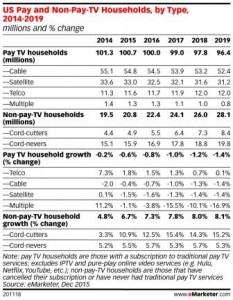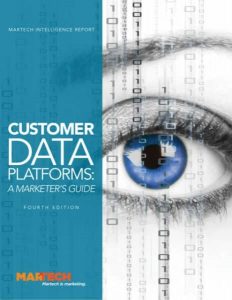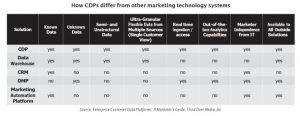 If you want to Increase SEO traffic, it seems more challenging than ever with the constant evolution and changes from Google.
If you want to Increase SEO traffic, it seems more challenging than ever with the constant evolution and changes from Google.
What are the real missing links between a search engine, your customers and your website?
How your potential customers are searching is changing rapidly.
If you are doing SEO the way it’s always been done… i.e. you research keywords, put those keywords in our website, write a 500 or 700 page SEO optimized article, and create linking strategies… that’s not going to work exactly like it used to.
Those days are rapidly coming to end. Not just because Google’s changing, but because the consumer is changing.
Learn how the consumer is forcing changes to the way Google presents content and how you must evolve the way you create and present content moving forward in order to capitalize on these changes and grow you business
Download this episode (right click and save)
Increase SEO Traffic – Discover the Missing Links Between Google, Your Customers and Your Website
How can I increase SEO traffic?
What isn’t Google sending more people to my website like they used to?
These are a few of the questions that I’m being repeatedly asked over and over again.
There is such a vast change happening in the search landscape and it’s not getting an easier to increase SEO traffic to a website.
There are so many websites and there is so much competition that it’s increasingly harder and harder to rank high in Google.
For years I’ve watched these changes happen.
There was a time in the not too distant past when businesses used increase SEO traffic to survive just off of Google alone because all that was required to increase SEO traffic was a knowledge of keyword research and keyword stuffing and over optimizing their websites.
A businesss could drive thousands of people to their website and have an enormous business all just from Google.
It was 2012 when out of nowhere and without warning, Google change the rules. A new update called Google Penguin came out and everything just exploded from underneath everyone’s feet. I had a good friend who built websites for the explicit purpose of helping small businesses increase SEO traffic. He was an expert in this field and he literally had clients that were calling overnight wondering what just happened.
Why was it out that out of nowhere their web traffic dropped to nearly nothing from Google?
We were looking at the search analytics and the traffic was gone and there was no business.
What happened?
Literally thousands upon thousands of businesses closed their doors almost overnight because they put all their eggs in the Google basket. What they failed to understand was that Google is still a relatively new technology that was, and is, evolving and changing.
Google has only been around 15 years (as we know it). Compare that to IBM who’s been around since the 1950’s or 1960’s and Google is still an infant in the corporate world.
I can remember as a early teenager in the mid-1980’s going to air shows and it’s amazing how the technology is changing so rapidly. I love military aviation and going shows. I always have and always will. I still remember going to the air show at Tinker Air Force Base or the airport in Oklahoma City and seeing the big AWACS planes.
The E-3 Sentry (AWACS) is a big airplane with the radar on top of it.

I remember stepping on board and thinking that the mainframe computers were massive. They were built by IBM and they took up almost 2/3 of the inside of the airplane and the whole length of it. Unfortunately, no pictures were allowed inside in those days.
Today that same technology (actually it’s a million times better) can be run from a laptop.
It is unbelievable how far the technology has come.
Now, think about Google and look at the last 15 years and think about all the changes that Google has undergone as they have built the search engine from the ground up.
It looks different and the algorithms have evolved and changed to try to give their users a tremendous experience.
It is really fascinating to sit back and watch.
How are Consumer’s are Forcing Changes to SEO?
Here’s the struggle that a number of us have as business owners who are trying to increase SEO traffic to our websites.
Many are still using old school SEO in a new school environment.
It’s not just the businesses but it’s also some SEO marketing companies, the “supposed” experts, which are supposed to be helping increase SEO traffic to a website. They are using techniques that we would have used 3-5 years ago.
Google is changing and here’s why it’s changing.
Think about your smart phone.
How do you search on it?
 I watch my almost 21-year-old son do this all the time, and my 14-year-old son… they literally say into their iPhones; “Hey Siri…” and then they verbally tell it what they’re looking for and then it populates the results.
I watch my almost 21-year-old son do this all the time, and my 14-year-old son… they literally say into their iPhones; “Hey Siri…” and then they verbally tell it what they’re looking for and then it populates the results.
I see people doing the same thing with android.
I have seen this happen walking around town on the street.
I hear “Hey Siri” all the time because someone can’t or shouldn’t look at the screen, type and walk at the same time; or the truth is that it’s just more convenient to talk than it is to type.
People are pulling up what they want off of the Internet through a vocal, voice search and it’s teaching us how to use search different than we have in the past.
In addition, how we search on a computer or laptop is evolving.
If you think about your own experience, when you go to Google you probably search for very hyper specific terms.
People search very specifically for what they’re specifically looking for.
The reality is that search is evolving.
Search engines are evolving.
Yes, you still need to think about keywords. But we need to take it the next step and not just leave it at the way it’s always been done.
How are You Missing the Mark in SEO and What Can You Do About It to Increase SEO Traffic?
Where we miss the mark is that we don’t understand the questions that people are asking when they go to the search engine.
We are so busy optimizing websites to increase SEO traffic via keywords that we are missing how people are actually searching.
We are missing how the other search engines are evolving with how people search.
Instead of just thinking about keywords, we ought to be discovering how our customers or clients describe their problems, needs, wants, or desires.
How do they think about their problems?
How do they think about their needs?
How do they think about their desires?
What is it that they’re looking for?
The days of just creating these cute little 500 page blog articles to increase SEO traffic that really says nothing, mean nothing, and helps no one are over. It has been over for at least the past twelve to eighteen months.
We as business owners still have still not caught up to this reality.
The ways people are using the internet are changing and SEO is changing.
People want answers to the problems they have and they want to know if your business understands their problems.
You may know, from a marketing perspective, what your consumer’s problems are but do you know from a practical perspective?

How are your consumers searching for the solutions to their problems?
They are using more and more voice phrases (think again to “Hey Siri…) which are very different from traditional text searches; and as I said even the text searches are changing.
What we have to do is understand the language that our prospects and customers are using.
We have to understand their behavior and intent.
That’s where keyword research can be valuable.
I talked about this a little bit (June 04, 2016) in my article titled “Marketing Strategies: Make Buying Decisions Easy”.
Keyword research can be really valuable to help us increase SEO traffic. It can help us understand consumer behavior. However, those keywords have to be tied to how their searching and what they’re looking for.
We must begin to think about the phrases that they’re using verbally, not just textually, because we are moving rapidly into a verbal online environment.
There are more smart phones every day now using the Internet by a 3 to 1 ratio over laptops. That number could be higher.
If you’re sitting on the couch watching TV and you decide you need to search for something; you could grab your laptop or you could grab your phone.
Most people are opting for the phone.
A lot of people have tablets. I have a new iPad Pro and a lot of people have android tablets, or even an Amazon Kindle.
What they’re doing is going to the Internet on their phones or tablets instead of their laptops because it’s convenient and fast using the voice feature… “Hey Siri, what does…?”
The reality is that the voice feature is also re-training our brains and influencing how we search via text.
The question remains; How are your consumers searching?
What are they searching for?
That’s what SEO is now.

SEO is About Messaging!
SEO is the craft of getting the right message on our website.
That doesn’t mean the technical things go away. It means we have one more thing to think about and that one thing is now the most important thing… Your message!
If you get the right message on your website you have the opportunity to attract the audience who is searching for:
- The problems they have that they want to solve
- The needs that they have that they want to meet
- The desires that they want to fulfill
If you connect the dots with those three things, you’ll suddenly see the search engine working wonderful things for your business website.
You will increase SEO traffic.
We are so disconnected from our consumer’s worlds and unfortunately all we have are keywords based on empirical criteria. That’s good, but it’s incomplete.
As a result, were left to wonder why Google is not sending us traffic.
I want to make it clear, linking is important… on-site optimization is important… the consistency of what you say and proper use of keywords is still important. You can’t be bouncing around all over the place in one article talking about 2 or three different subjects.
Good SEO, in my opinion, takes one problem, for one person, and offers one solution.
I’ve been saying this for two years now.
If we get our heads around this the internet is an amazing place to grow our business.
However, it’s going to take work if you want to increase SEO traffic for your business.
It doesn’t matter what industry you are in, at the core it is still the same.
You have to understand your consumer’s behavior and how to message t them no matter what industry you’re in.
You have to understand how they are searching for the solutions you solve, needs you meet or desires you fulfill; and make it all about them over talking about you.
Are you presenting yourself through your content in a way that makes them feel that you understand them?
Are they saying to themselves consciously or subconsciously?
“OMG, how did you know?
That’s what you’re always after!
This is marketing.
It’s more than just creating content and using keywords to increase SEO traffic.
It is the understanding of the psychology of your individual prospect.
You are connecting the dots and it’s not just through keywords anymore.
It’s by understanding consumer behavior.
You’re now specifically solving one problem, meeting one need or fulfilling one desire.
How Do I Create A Specific, Dynamic, compelling and Relevant Message for My Business?
How do you actually create content for one person who has one problem, need, or desire and give them what they need or want?
Before I share that with you, I want you to know that it looks and sounds easy on the surface.
I’ve got some clients that are finishing the process I’m about to share with you. They have shared with me, and will with you via testimonials soon, about how this was a lot harder than they thought it was going to be.
To the point, how do you create a dynamic, compelling and relevant message?
#1 – What Problems are You Passionate About Solving?
You first have to determine the problems that you’re passionate about solving. You aren’t passionate about solving every single problem.
You may think you are, but you aren’t.
What are the problems you’re passionate about solving?
Why did you start your business?
This is the one time I let you think about you.
I guarantee you that for most of you, the problems you are passionate about solving are buried.
Here is a hard truth; if you try to do this on your own you won’t discover it.
It’s like trying to do counseling on your own. Have you ever tried to do counseling by yourself and do self-therapy?
It doesn’t work.
#2 – What are the Tangible Values Your Customers Experience and How Did They Feel About the Experience?
What are the tangible values that your customers experience from the moment they met you until you delivered?
How do they feel about that experience?
The average business has between 3-6 tangible values.
#3 – What are the Specific Problems You Solved for Each Tangible Value?
For each individual tangible value, what specific problems do you solve?
This isn’t a time to stay broad. It’s a time to focus and narrow in. For each tangible value there could be up to 20 unique problems solved.
#4 – Who Do You Solve Each Problem for?
For each problem that you solve, who do you specifically solve those problems for?
I’m not asking for a broad demographic. I’m not looking for a 44-year-old man who lives in Hackensack, New Jersey and makes $ 60,000 year.
I want a profile that is more like this: “A single dad who works 50 hours a week, makes $ 60,000 a year, and is struggling to provide…”
The key is to learn who your specific audience is as it relates to the specific problem.
#5 – What Business are You “Really” In?
The last step is discovering what business are you are “really” in.
Another way of thinking about this is to ask yourself how does the world perceive your business and how do you want them to see your business?
Do those two things align?
They better if you want to increase SEO traffic, attract new customers, increase sales and grow your business.
Here is the cool part… it applies just as much offline as it does online.
Conclusion
We have to start thinking about SEO from a different point of view in order to increase SEO traffic.
We have to stop thinking about Google as a keyword curator that just sends people to us for the purpose of buying whatever it is we have to offer.
We have to start thinking about our businesses as a tool that gives people what they want.
How do we know what they want?
We have to get into the consumer behavior, in the psychology part of “why” they are searching. If we understand “why” they are searching we can create content that is designed to appeal to that search by:
- Solving one specific problem
- Meeting a one specific need
- Fulfilling one specific desire
If that is done well, we have given the search engine something to work with and we should increase SEO traffic to our websites.
If you are doing SEO the way it’s always been done… you just take keywords, put keywords in your website, write a 500 or 700 page article… that’s not going to work.
Those days are rapidly coming to end. Not just because Google’s changing, but because the consumer is changing.
The way they use the tools, like their mobile phones to do searches, are changing.
They are not just using a keyword.
They’re using a verbal, vocal phrase into their phones and the results that come up for verbal phrases can look very different from searches that come up for text phrases.
The number of text searches is coming down and the number of speech searches is going up. And, the way people are putting in text searches is now influenced by the way they speak.
Does what your customers search for align with your message?
Do you even have a message?
Are you ready for the changes that are happening?
If you’re not… and if you don’t know what the specific problems are that you solve and who you are solving them for… or how to create content landing pages blog articles etc. that appealed directly to the consumer… (Click Here and learn more on the Begin Here page)
Contact me today. Click here or on the image below to access my calendar. I will give you an hour of my time for free. I’ll do an analysis of your website with you and give you an idea of where your website is great and where your website needs to help with your messaging.
I’ll give you ideas of how you can immediately start using your website as a tool to attract new people through a search engine.
Digital & Social Articles on Business 2 Community
(47)
Report Post





